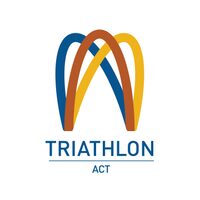Our Locations
6 locations across Canberra
Offering a range of allied health services for every stage of your health and wellness journey.
ABOUT US
Injury management for everyone
From elite athletes to desk jockeys, it doesn’t matter which walk of life you come from or what your goals are, our caring staff are ready to help you out and get you back on track.
Find out more about usCommon conditions we treat
AC Joint Injury
Achilles Tendionopathy
ACL Injury
Acute Wry Neck
Adductor Strains
Ankle Sprains
Calf Strain
Carpal Tunnel Syndrome (CTS)
Cervical Headaches
Cervical Whiplash
Concussion
Cuboid Syndrome
Digital Ligament Injuries
Distal Radius Fracture
Dupuytren’s Disease
Extensor Tendinopathy
Flexor Tendinopathy (Golfers Elbow)
Fractures
Hand Infections
Labral Tears Of The Shoulder
Lower Back Pain
Mastitis
Meniscal Tears
Muscle Contusions
Nail Bed Injuries
Osgood-Schlatter Disease
Patello-Femoral Pain
Posture
Sever’s Disease
Shoulder Impingement
AC Joint Injury
> LEARN MOREAchilles Tendionopathy
> LEARN MOREACL Injury
> LEARN MOREAcute Wry Neck
> LEARN MOREAdductor Strains
> LEARN MOREAnkle Sprains
> LEARN MORECalf Strain
> LEARN MORECarpal Tunnel Syndrome (CTS)
> LEARN MORECervical Headaches
> LEARN MORECervical Whiplash
> LEARN MOREConcussion
> LEARN MORECuboid Syndrome
> LEARN MOREDigital Ligament Injuries
> LEARN MOREDistal Radius Fracture
> LEARN MOREDupuytren’s Disease
> LEARN MOREExtensor Tendinopathy
> LEARN MOREFlexor Tendinopathy (Golfers Elbow)
> LEARN MOREFractures
> LEARN MOREHand Infections
> LEARN MORELabral Tears Of The Shoulder
> LEARN MORELower Back Pain
> LEARN MOREMastitis
> LEARN MOREMeniscal Tears
> LEARN MOREMuscle Contusions
> LEARN MORENail Bed Injuries
> LEARN MOREOsgood-Schlatter Disease
> LEARN MOREPatello-Femoral Pain
> LEARN MOREPosture
> LEARN MORESever’s Disease
> LEARN MOREShoulder Impingement
> LEARN MOREOUR TEAM
We think they’re pretty awesome
The team at SportsCare is made up of Physiotherapists, Exercise Physiologists, Podiatrists, Strength and Conditioning, Massage Therapists and Sports Doctors who are ready to provide the highest standard of care for our clients in a safe, professional, and friendly environment. From elite athletes to desk jockeys, it doesn’t matter which walk of life you come from or what your goals are, our caring staff are ready to help you out and get you back on track.
Meet our teamCAREERS
Join the team
We are always looking for talented allied health professionals to join the SportsCare family. We are dedicated to providing quality care and customer service. If that sounds like you, we’d love to hear from you.
Work with usPartnerships and Sponsorships











